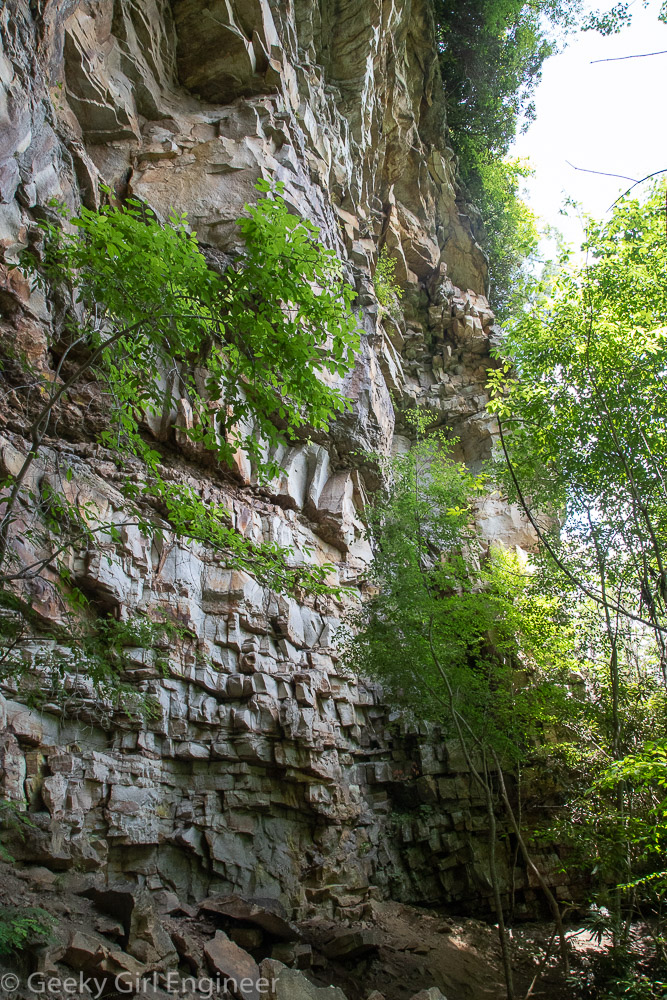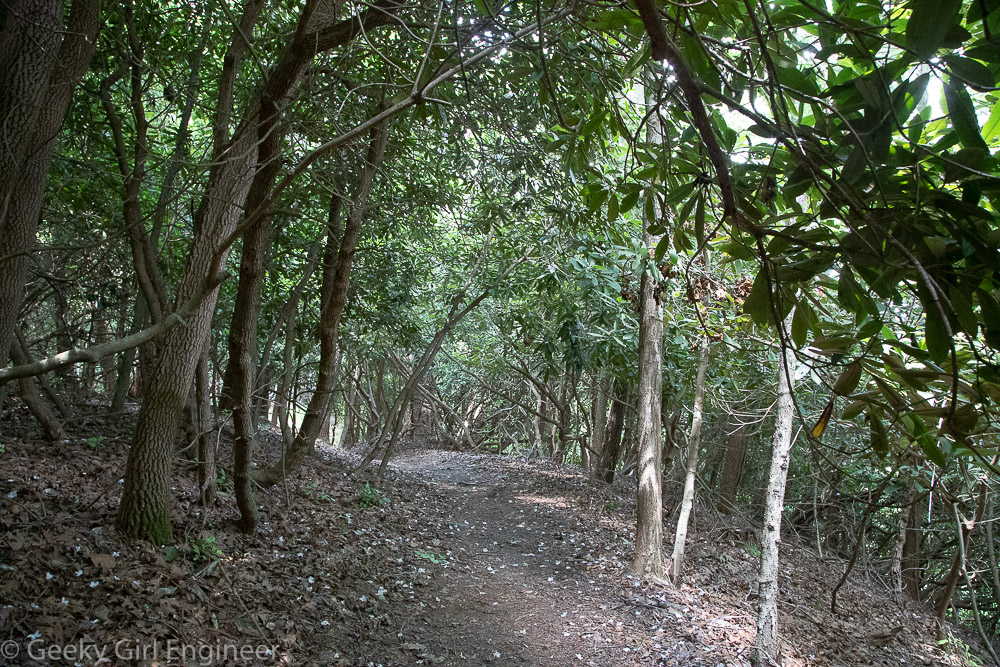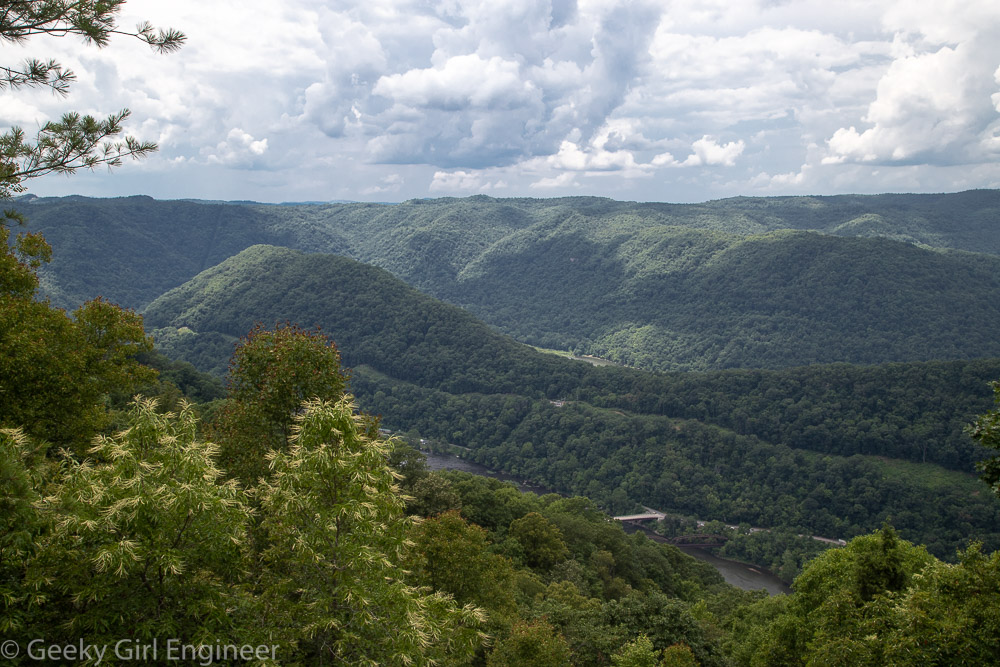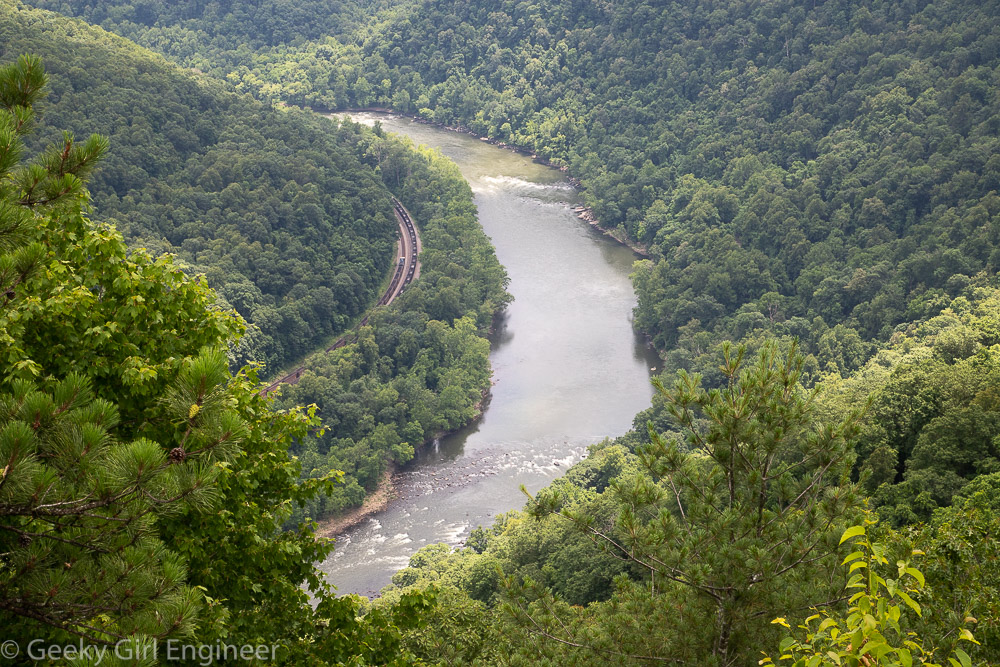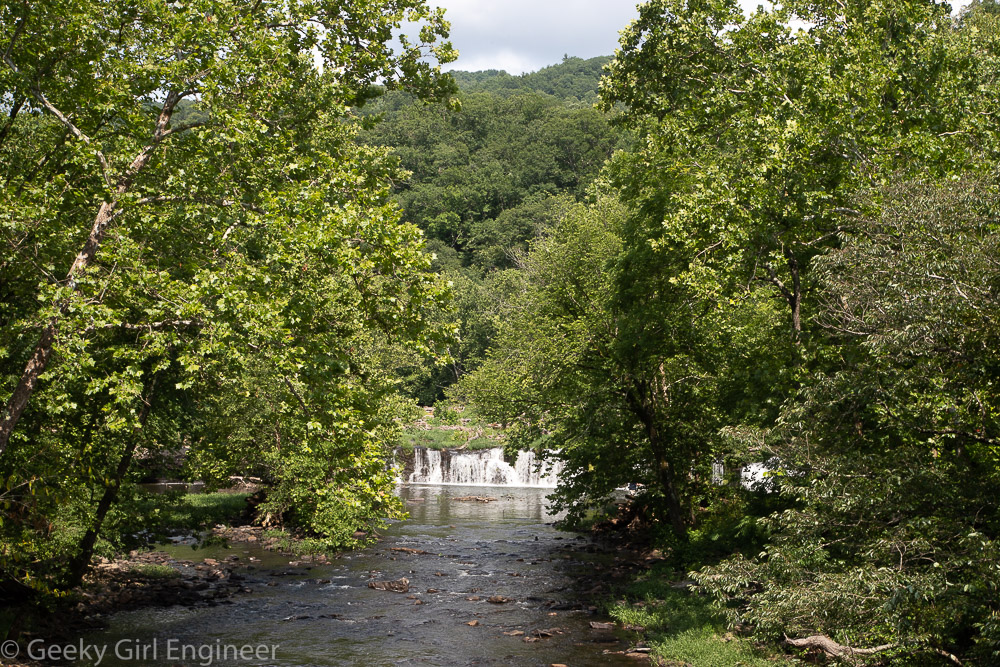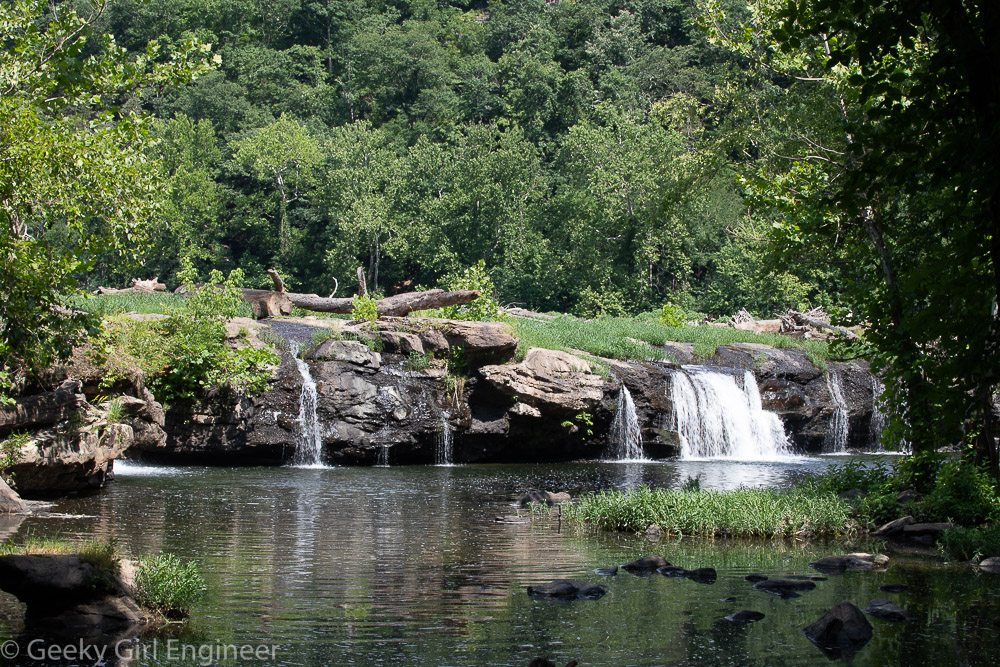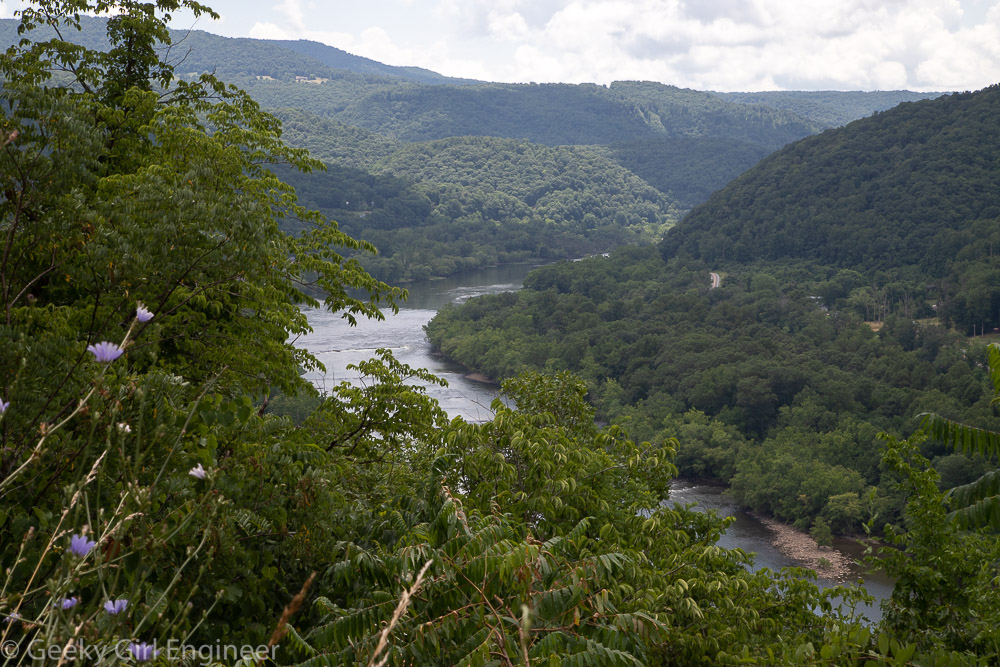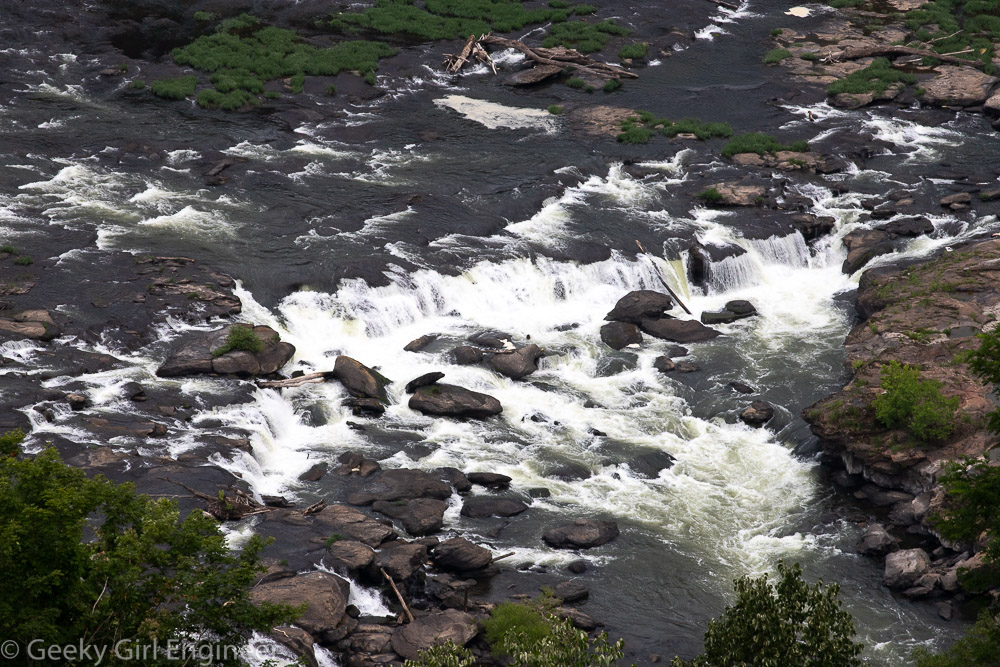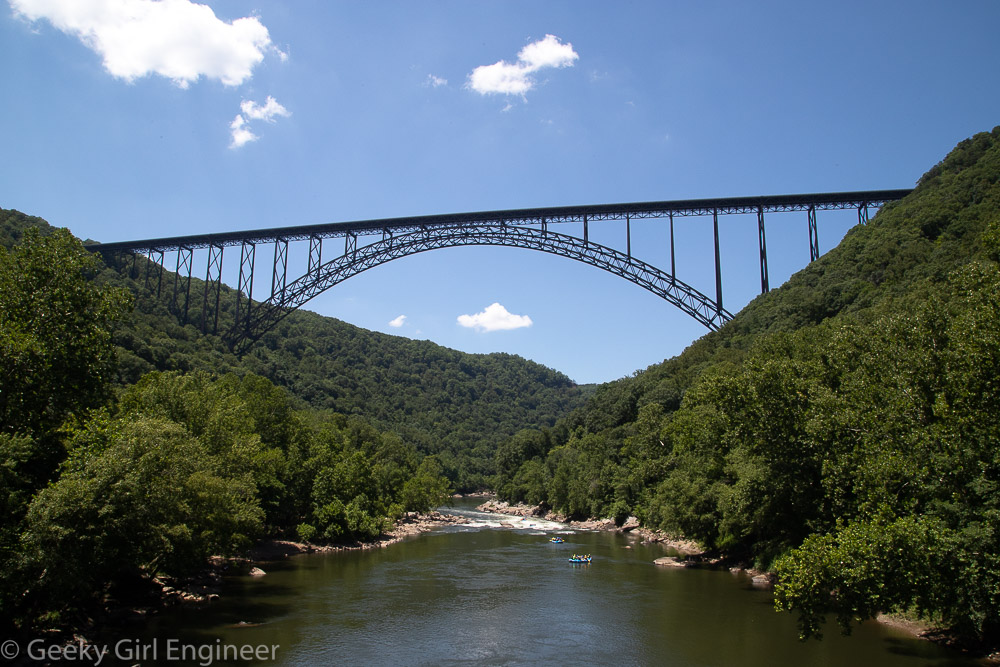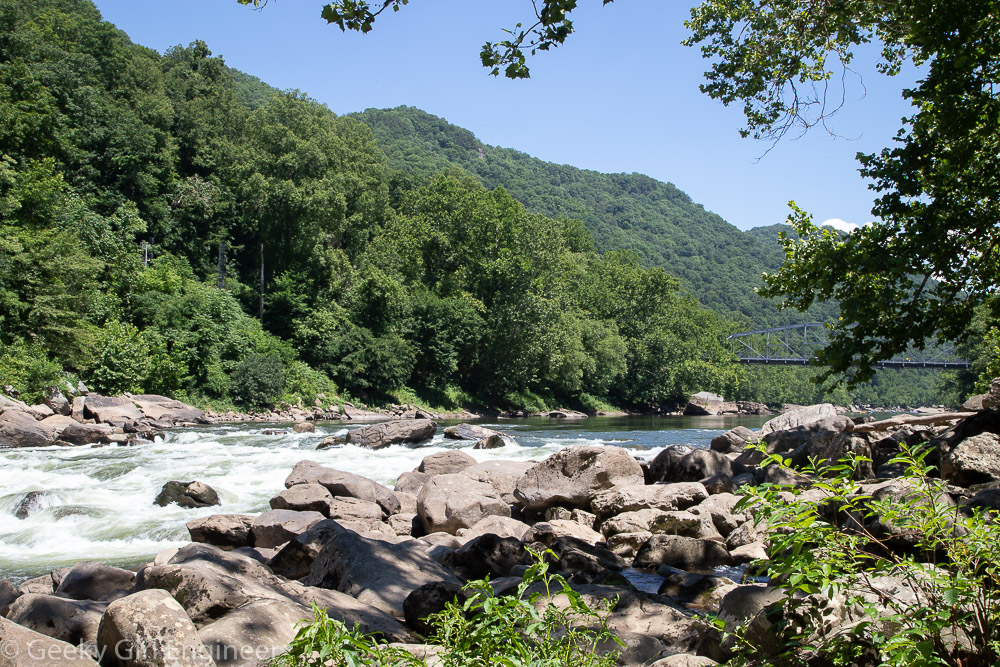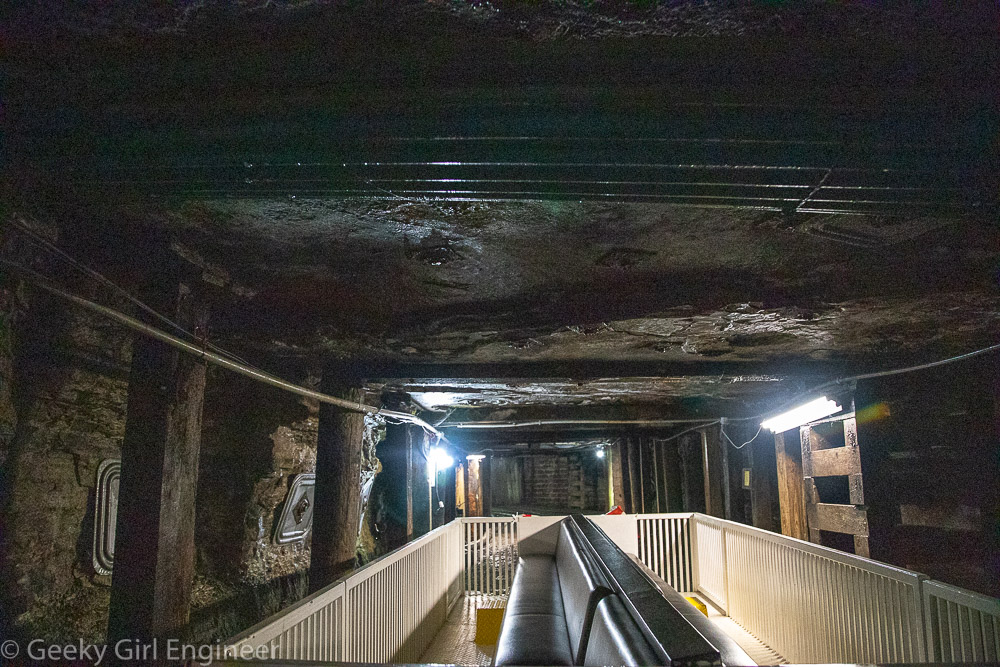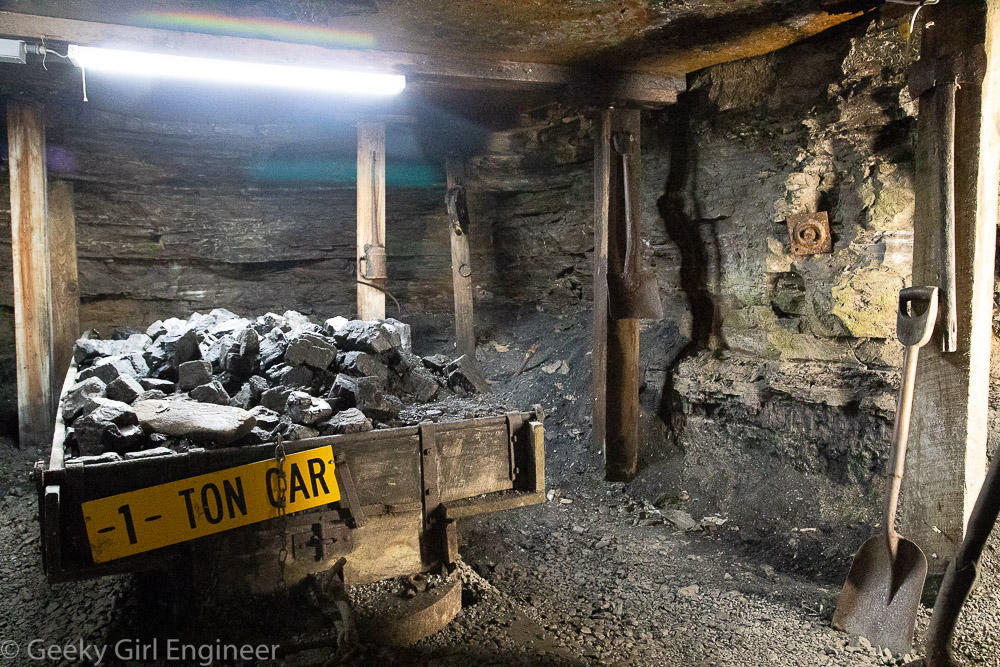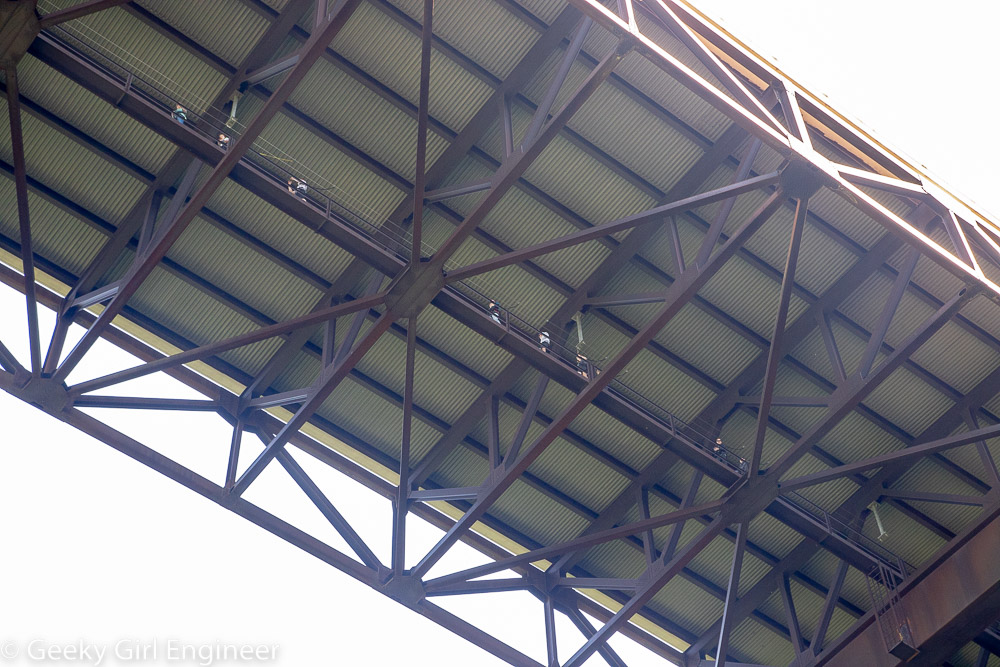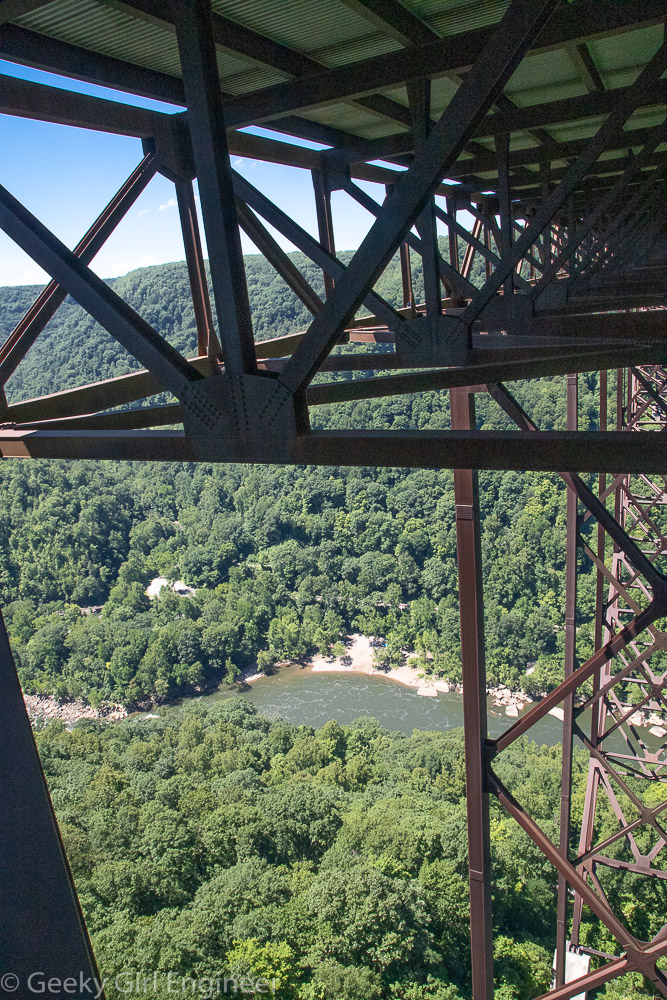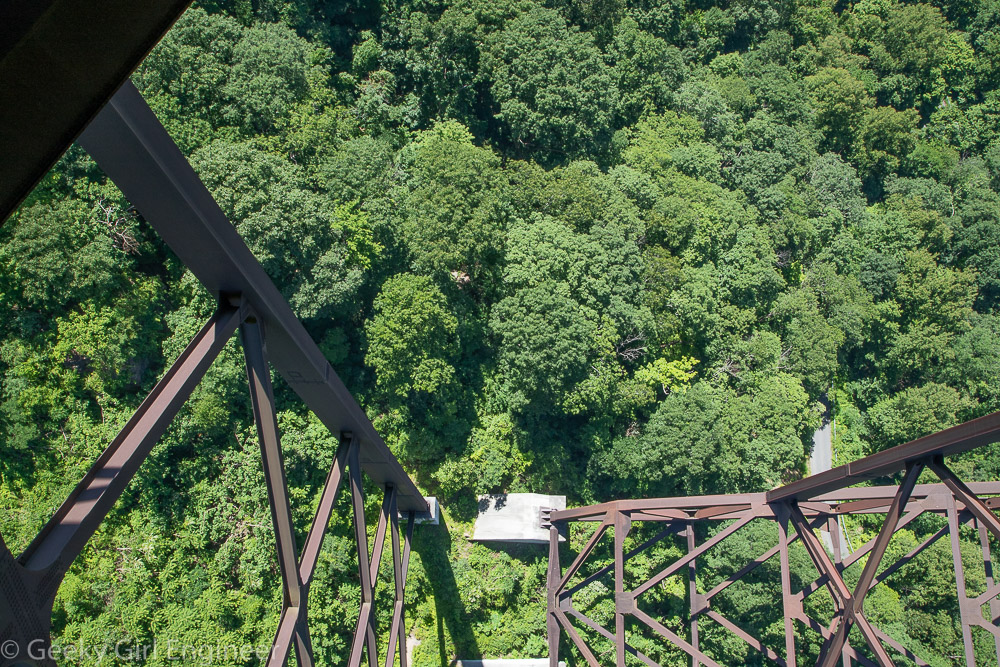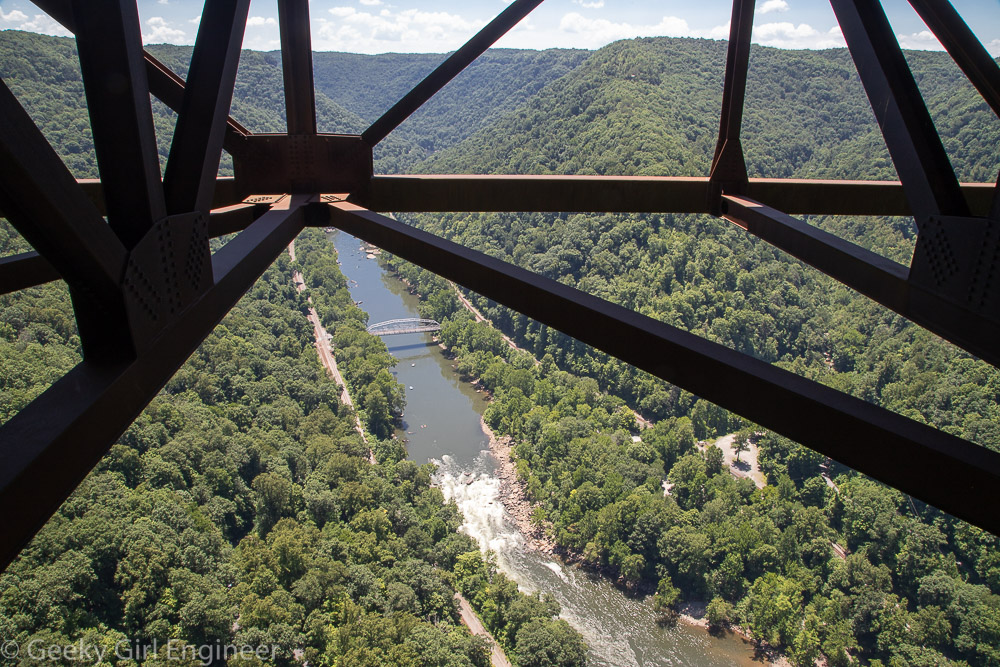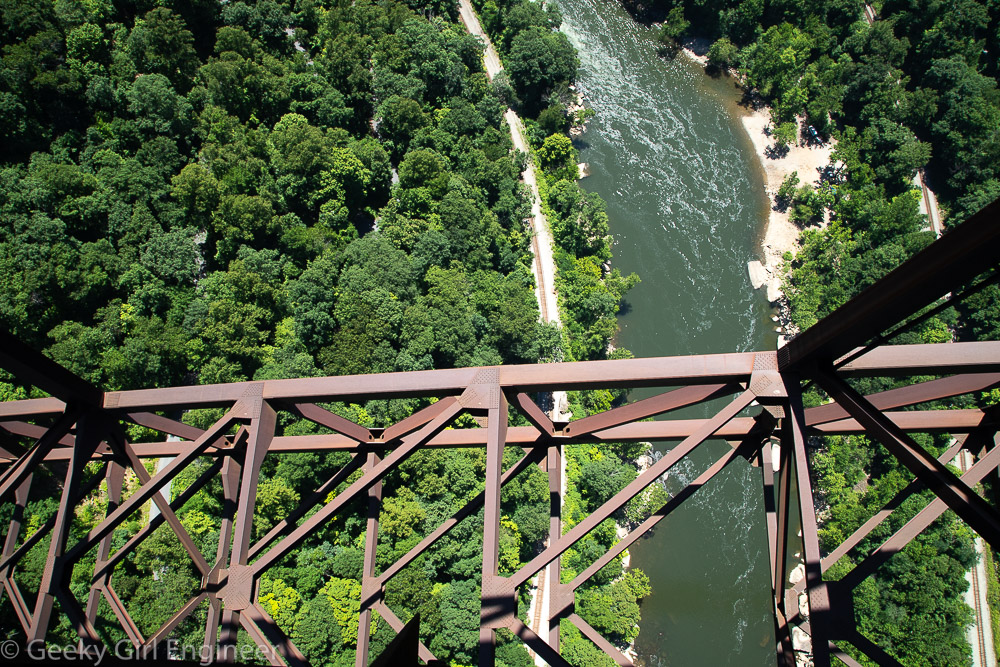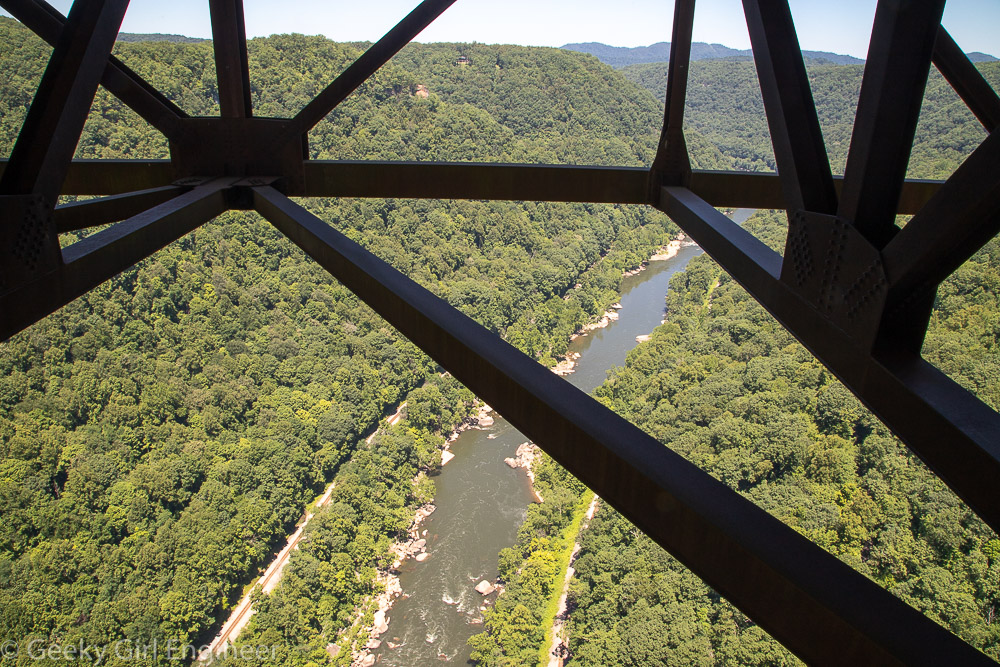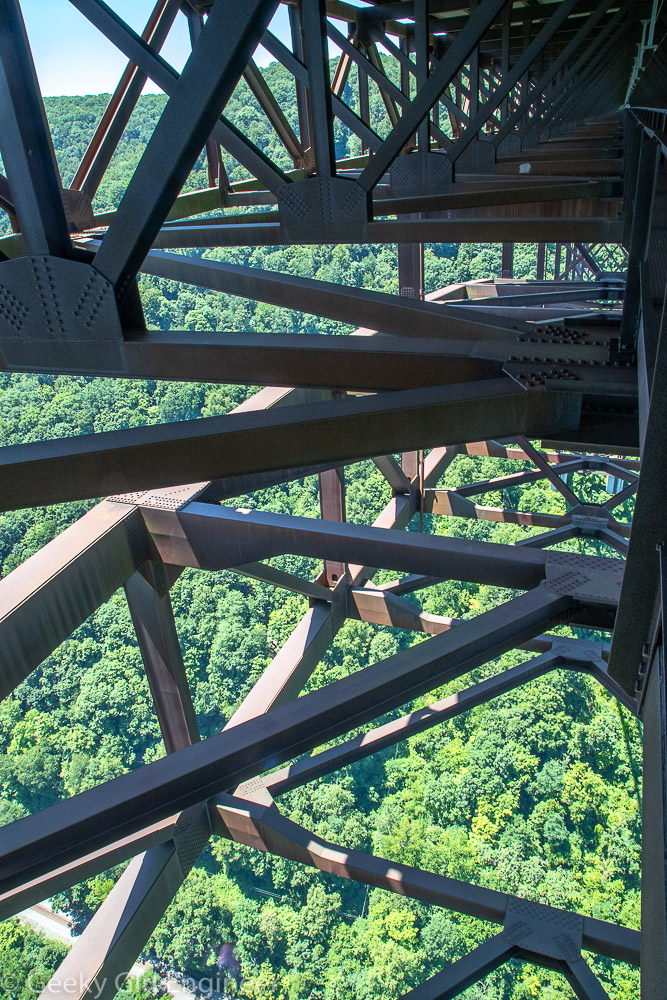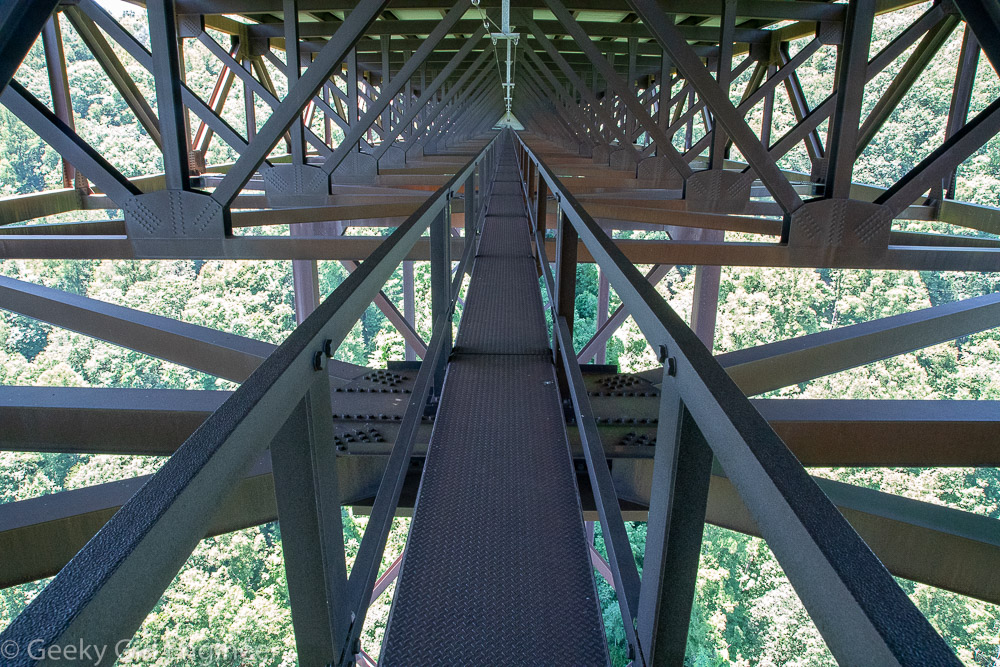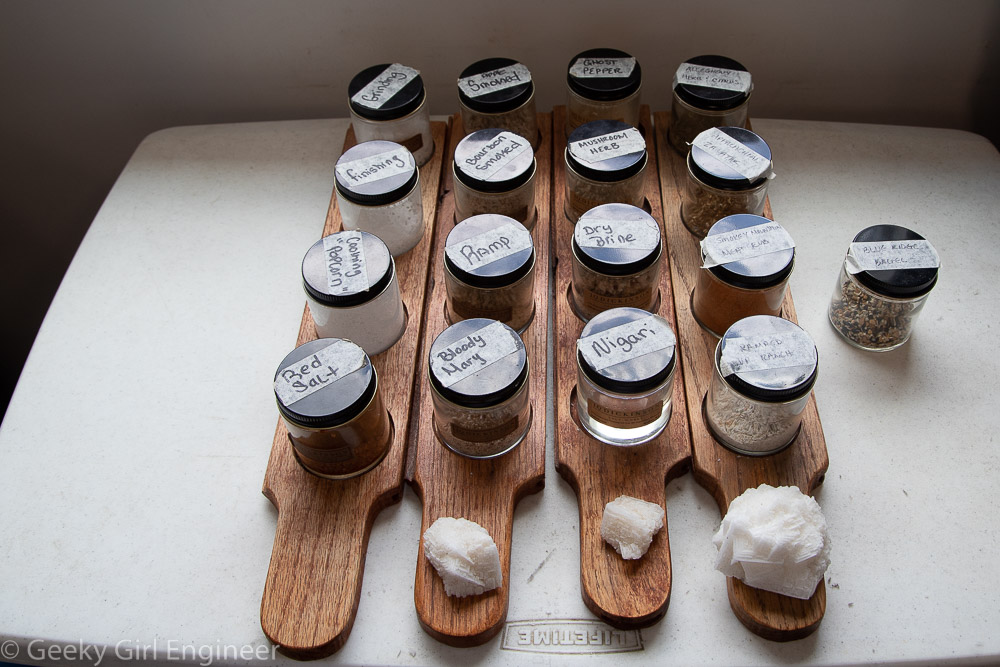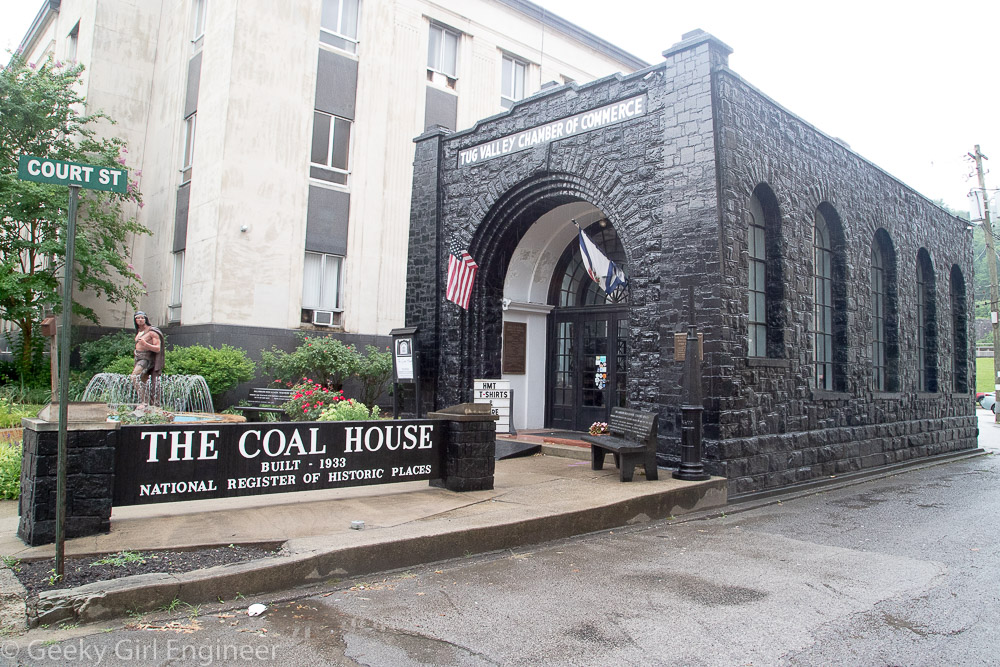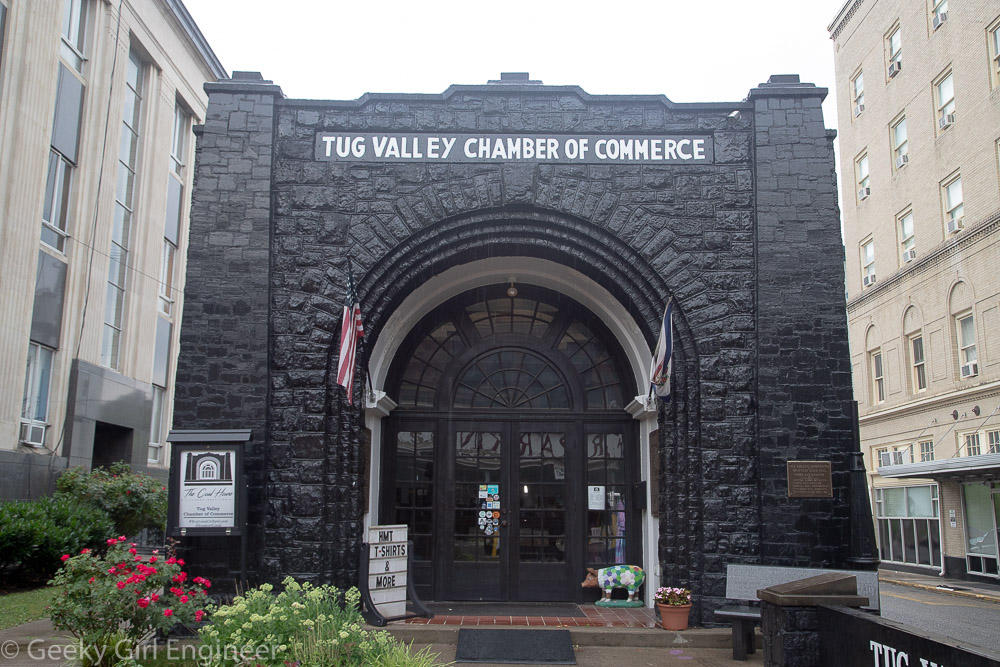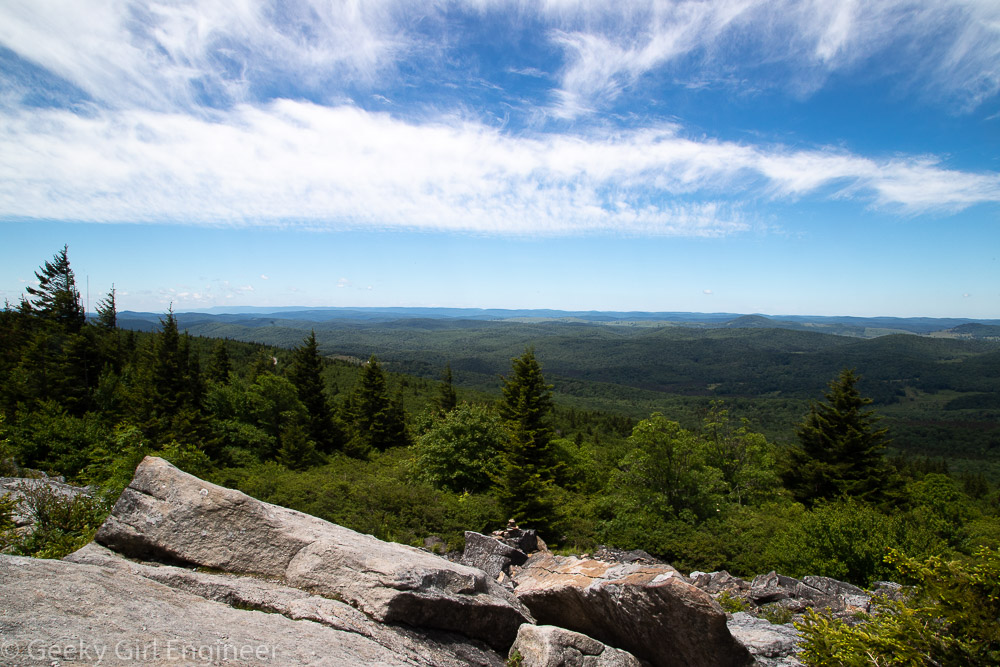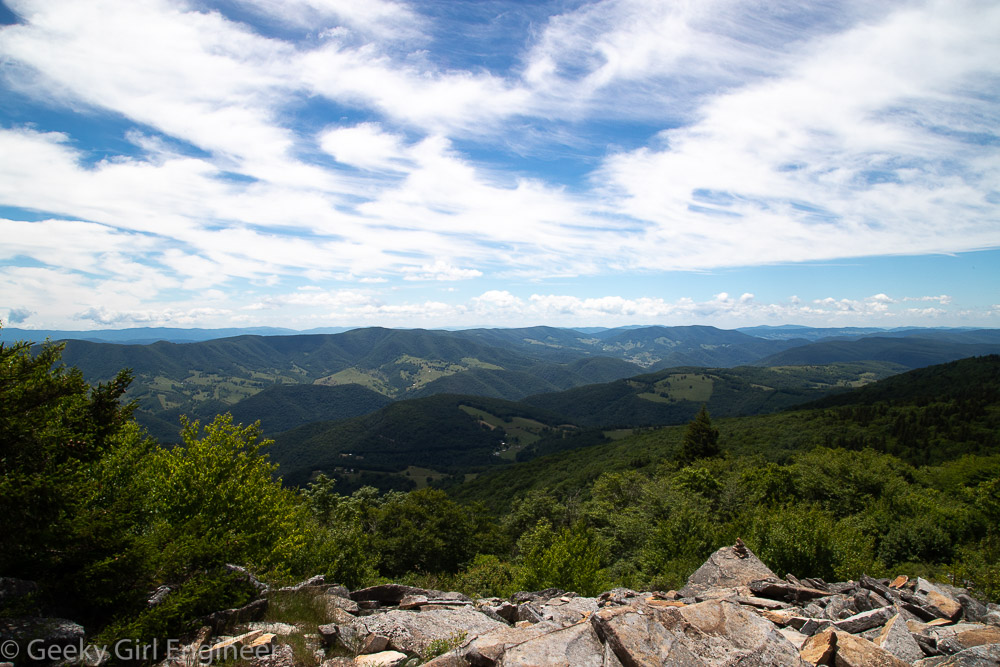Yesterday I went quite the hike within New River Gorge National park, and it was more of a hike that I thought it would be. I went to the Grandview area, and I hiked along the Grandview Rim trail. The trail is one way, so for the leg of the hike walking towards Turkey Spur, the end of the trail, I took the Castle Rock trail, which parallels the Rim trail for the first half mile. Castle Rock trail is gorgeous, and it takes you just below a wall of rock. At one portion of the trail, the wall of rock has a visible coal seam, which is extra interesting. However the footing on the Castle Rock trail is not even, and there is lots of ascents and descents, so it is a good workout. The rest of the trail, once back on the Rim trail is fairly easy going, especially compared to the Castle Rock trail. The start of the trail is the main overlook, which overlooks a bend in the New River, so you are viewing it from the base of a U shape. The end of the trail is Turkey Spur, which also overlooks the river, but at a location where in the foreground you see the river headed to the west, where it curves, then behind a hill, you can see the river looping around again and headed east.
Tag Archives: West Virginia
Sandstone Falls
I left West Virginia today, but before leaving, I stopped at Sandstone Falls in New River Gorge National Park to do a little hiking. I also drove to a couple of overlooks of New River and Sandstone Falls.
New River Gorge National Park
I have been sightseeing and hiking in New River Gorge National Park and surrounding area for several days now. I will be posting the photos in a few different posts. I have taken quite a few photos in the area around the New River Gorge Bridge, so those are what I am posting now.
Exhibition Coal Mine
While visiting New River Gorge National Park, I am in the Beckley area, so I decided to visit the Exhibition Coal Mine. It is a museum dedicated to coal mining including structures that show how people used to live. The main attraction though is an actual coal mine that shut down decades ago that you can tour while on a mine car. It was quite interesting. Our guide was a retired coal miner, and he was able to explain how things worked. You cannot stand up straight in the coal mine. We were seated on a car the whole time, but our guide got out several times, and he had to stoop over. He further explained that with most area, they did not remove the rock above the coal seam. The coal seam was generally only 24 inches high, so miners worked on the ground in a 24 inch high area. The work was obviously grueling.
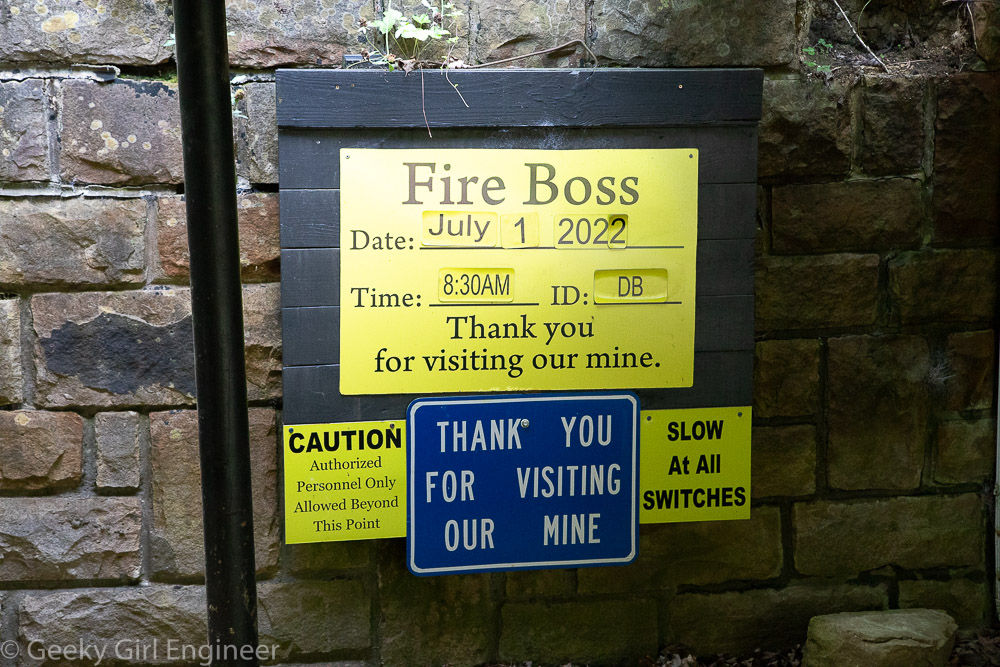
Signs near entrance to mine. They still have a fire boss check the mine everyday even though they are not mining.
Bridge Walk
I spent today doing more exploring of New River Gorge National Park, but I started the day by walking across a bridge. The walk across the bridge was under the road deck, which is not something a person normally gets to do. Bridge Walk lets you do just that. The New River Gorge Bridge is beautiful with a wonderful design, and walking under the bridge allowed me better appreciate and to take photos of the structure. Walking on the catwalk also allows for photos of the stunning scenery. It was a nice, leisurely walk that just happens to be, at the highest point, 876 feet above the ground, by walking on a two feet wide catwalk while attached the longest continuous safety line in the world.
Nuttallburg
I started exploring New River Gorge National Park today. It is second on my list of things to see in West Virginia after the capitol. The park is really spread out, and there are lots of areas to explore. I did some hiking in the Nuttallburg area today because it features the remains of a coal mining operation, and I love ruins. I hiked from the top to the headhouse. I was originally going to hike down along the trail that somewhat follows the conveyor, but I met some people at the headhouse, who had just hiked up the that trail, and they said do not do it. It is a really difficult trail, and while the park material said as much, somehow their exhausted faces persuaded me more. I then drove to area near the river where the lower part of the mining operation was and hiked around there a little. The area trails are really neat because you can essentially follow the mining operation from the mine entrance to where the coal would have been loaded onto trains.
While the mining operation started in the mine, obviously, the first part you can see is the mine entrance. As I stood in front of the mine, I could feel the air coming out was probably 10 or 20 degrees colder.
The coal cars then went to the headhouse where the coal was dumped and loaded onto the conveyor, which brought the coal all the way down the slope to be transferred to trains.

Headhouse where coal was dumped out of the cars from the mine and onto the conveyor. In the lower right, you can see the start of the conveyor.
The conveyor was essentially a really long conveyor belt, and it was kind of awesome to stand beneath it.
The conveyor ended at the tipple. The tall structure seen on the right was a storage silo for the coal.
The tipple sat on top of train tracks, and the coal was transferred to the trains there.
There are also some remains of coke ovens. These are considered to be the earliest remains of coal operations. Originally the coal converted to coke there.
JQ Dickinson Salt-Works
I visited JQ Dickinson Salt-Works, a small, salt-harvesting facility today, and it was fascinating. I love factory tours, but I don’t think the term factory applies to this place, and it would almost be derogatory to call the salt works a factory. In any event, the process was fascinating, and I am somewhat in awe of how low-tech it is, yet I am amazed how they can produce so much salt. My guide said they will produce about 16,000 pounds of salt this year. There used to be springs in the area that Native Americans knew about as they knew that animals liked to lick the salt from the springs. Salt was produced commercially from the springs when white settlers moved in to the area, but then production ended in the twentieth century. The operation was resumed more recently, and the current well was installed in 2013.
The start of the process is somewhat anticlimactic. The process starts with groundwater that is pumped from an aquifer that is 350 feet deep and contains water from an ancient ocean. The anticlimactic part is that the well is below ground (obviously), and so all you see from the surface is a tripod of sorts marking off the location.
The groundwater is first pumped into storage tanks to allow the iron to settle out from the water.
They have sample jars that show what the water looks like when mixed (right) and then once the iron has settled and comes out of solution (left). My guide said they try to keep the process as environmentally friendly as possible and allow little to nothing go to waste. The iron that settles out is eventually sold for wood staining or for pottery glazes.
After the iron settles out, the water is pumped to one of three greenhouses to concentrate in shallow pools in black-lined tables.
I forgot to ask my guide what the starting salinity of the groundwater is, but in these first greenhouses, it sits for about 24 hours until it reaches a salinity of 15%. In the shallow pools, I could see a few fine salt crystals settling out.
The concentrated water or brine is then pumped to another storage tank and then into another greenhouse. In this greenhouse, the salinity is raised to 25%. This is where large salt crystals are formed. One thing I got confused about is that my guide said the salt was now 25% salinity, but they were clearly salt crystals. Visually it didn’t look like 75% water and 25% salt. I am not sure if I understood correctly what is meant by salinity or if I misunderstood her, or if I am just missing a detail. In any event, the salt was quite pretty.
One of the tables had been cleared of the concentrating salt, and there were buckets of salt crystals ready for final processing.
The salt is then moved to another room where it is dried. After that, a person inspects the salt and removes any impurities with tweezers. The women who were working admitted that it is a really tedious job. I would need a headlamp and magnifying glasses to do the task.
The salt is then ready to be sold. They sell it in three crystal sizes (from finest to coarsest): popcorn, finishing, and grinding. They also mix it with spices, most or all of which are grown locally, to sell as spice salt mixes. The liquid that is left over once the salt settles out is also sold as nigari. Nigari is used to make tofu and cheese, and some people take it as supplement as it is full of minerals. This is part of what my guide said is their goal to not let anything go to waste. Until today, I had never even heard the word nigari, so yet another thing I learned today.
Kanawha State Forest
After visiting the Coal House, I went to Kanawha State Forest to do a little hiking. The park is pretty, but it had just rained, so hiking was a little difficult in that the trails were rather muddy. It has some nice trails, but unfortunately the map on the website is really not that helpful. One of the trails I wanted to see, the Spotted Salamander Trail, I only found because I asked some people hiking if they knew how to get to it. Still, it was a nice park to visit, and I got some exercise done. My guess is that the park is absolutely gorgeous when the wildflowers are in bloom.
Williamson Coal House
While in Charleston, I found the book “The Essential Way Out in West Virginia” by Jeanne Mozier for sale, and I immediately bought it because this is my kind of book. One of the crazy items in the book, is Coal House, which according to the book is the oldest and largest building made out of coal in West Virginia. It was constructed entirely of coal, and its walls are two feet thick. Incredibly in 2010, the building caught fire, and the interior was gutted, but the coal block exterior was untouched. Supposedly, the exterior is not a fire hazard, which seems to be proven by the fact that it didn’t burn during the fire. However, it is coal, so I am still trying to understand that.
Quite obviously, I had to see this coal house. I drove about three hours roundtrip out of my way to see it, which may be not normal, but it was completely worth it. One detail that I could see in person is that bricks are very shiny. They must be coated with something, probably for weather resistance.
Spruce Knob
I’m taking a leisurely road trip through West Virginia. The main destination is Charleston as this trip will add the West Virginia State Capitol to my list of state capitols, as I am trying to see them all. Along the way though, I am just enjoying the drive and finding detours and stops to make along the way. The first detour in West Virginia was Spruce Knob, which is the peak of Spruce Mountain and the highest point in West Virginia. It is a lovely drive to get there, as long as you don’t mind curving mountain roads including the final part which is forestry road and not actually wide enough for two vehicles. At the top of the mountain, there is a short trail that you can take to give you several wonderful vantage points of the surrounding area. There is also an observation tower of which I don’t understand the point because it provides views of the surrounding trees and that is about it. However, the views from the trail are worth the detour from the road.



